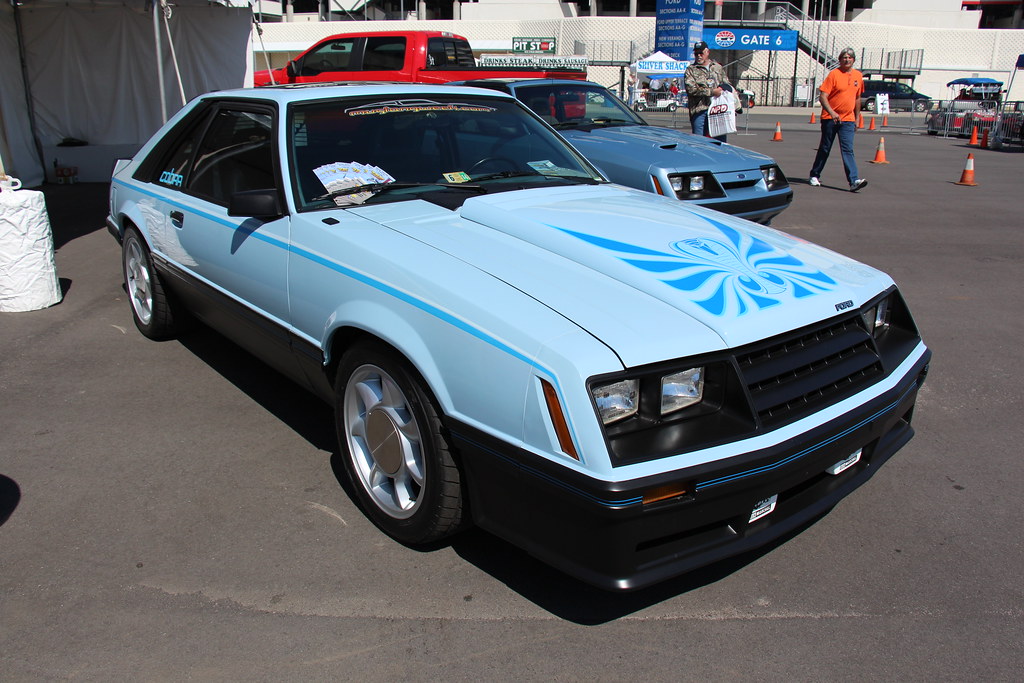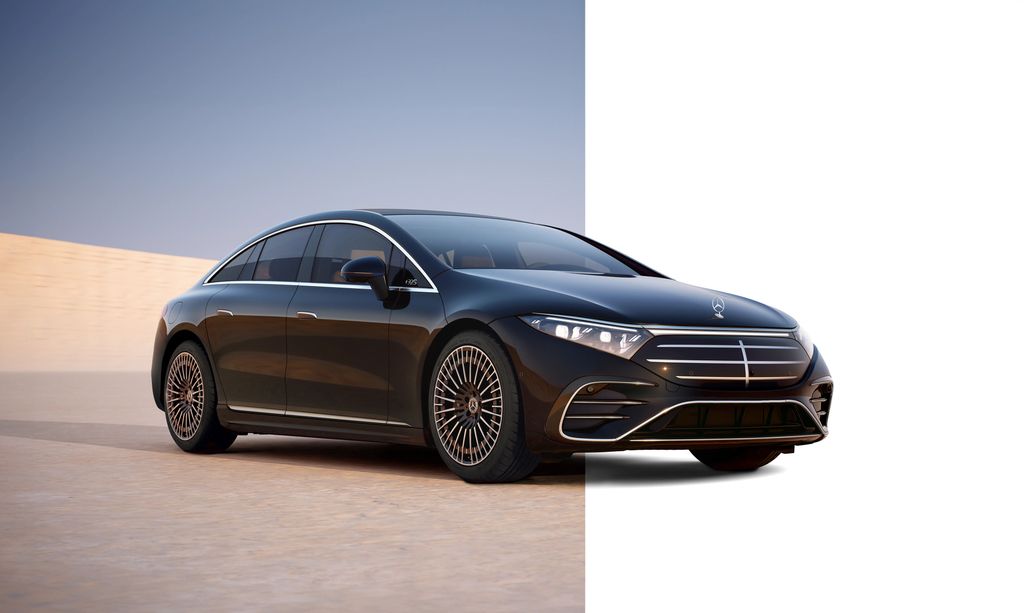
Automotive design is a delicate balance, a thrilling tango between the cold logic of engineering and the fiery passion of art. It’s where the interplay of form and function doesn’t just define performance, but utterly captivates onlookers, making our hearts pound and our imaginations race. Over decades, intrepid designers have sought to create machines that don’t just move us physically, but evoke a cascade of powerful emotions, transforming mere metal into a symphony of desire.
From the sensuous, flowing lines of classic grand tourers to the bold, aerodynamic forms sculpted by the relentless pursuit of speed, the quest for breathtaking beauty has gifted us some of the most iconic designs in human history. We’re not just talking about technical specifications here; we’re diving deep into the aesthetic appeal, the soul, and that undeniable ‘wow’ factor that leaves you weak in the knees. These are the cars that transcend their utility to become pure, unadulterated art, making an emotional connection the moment your eyes lock with their magnificent silhouettes.
Forget the mundane, dismiss the ordinary – these are the automotive legends we truly love. They stand as magnificent proof that cars are much more than just transport; they’re a form of art combining intricate engineering, inspired design, and an unshakeable passion. These machines aren’t just vehicles; they are timeless designs that have radically reshaped our perception of both engineering prowess and sheer aesthetic brilliance. Whether it’s the perfect curve of a fender or the razor-sharp lines of a sculpted body, these selected cars represent the absolute pinnacle of automotive design, remaining relevant, admired, and fiercely coveted decades after they first roared to life.
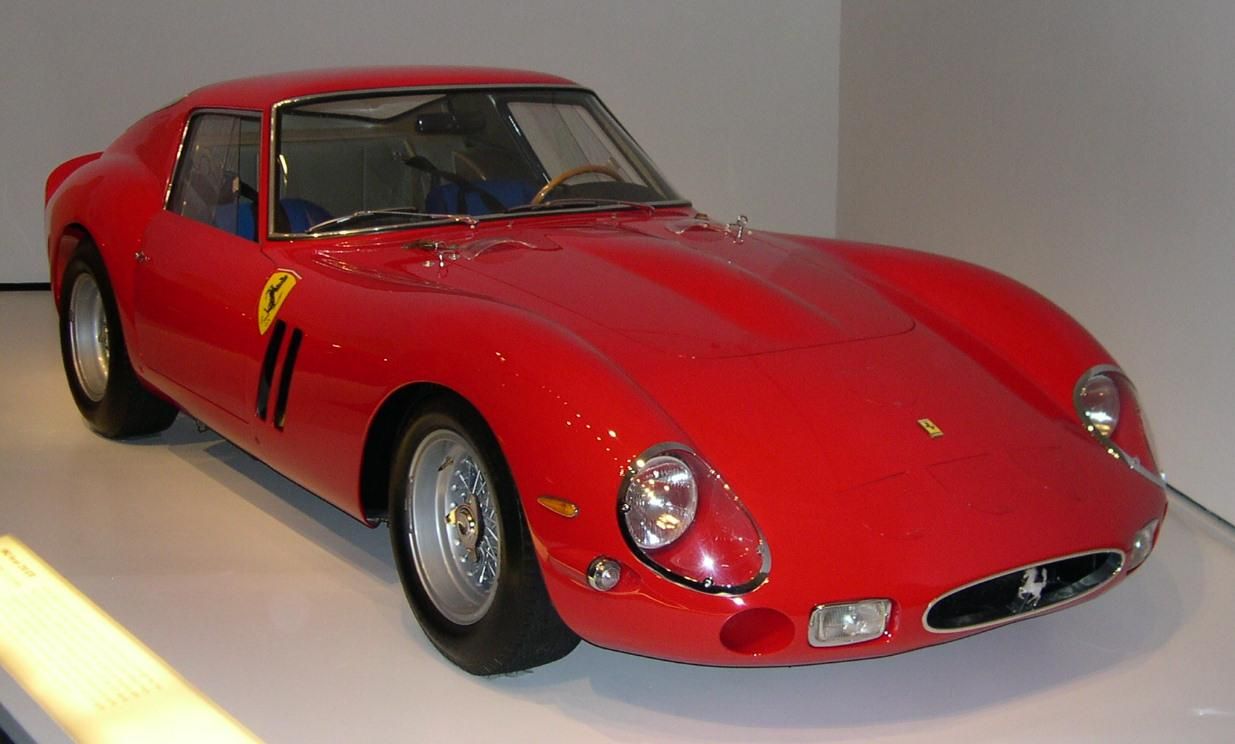
1. **Ferrari 250 GTO**Ah, the Ferrari 250 GTO! A name that instantly conjures images of speed, elegance, and unimaginable rarity. This isn’t just a car; it’s a masterpiece, a seamless blend of design and engineering brilliance that emerged from Ferrari’s hallowed Maranello workshops in the early 1960s. Its smooth, flowing curves and aggressive, purposeful stance don’t just hint at performance; they scream it, making it an undeniable standout in the pantheon of classic cars and a timeless racing icon.
Underneath that utterly captivating exterior pulsed a mighty V12 engine, unleashing a formidable 296 horsepower. This wasn’t a show pony; the 250 GTO was a dominant force on the racetrack, especially famed for its prowess in grueling endurance racing, where its balance of power and sculpted aerodynamics proved unbeatable. Designed by legends like Giotto Bizzarrini and Sergio Scaglietti, its streamlined, low-slung body perfectly blended form with function, a testament to its racing-focused pedigree.
The interior, stripped-down and focused purely on functionality, with minimalistic controls and a race-oriented layout, serves as a stark reminder of its primary purpose: winning. Today, the Ferrari 250 GTO remains one of the most expensive cars ever to cross an auction block, a true, enduring icon of both unparalleled beauty and ferocious performance, a car that perfectly embodies Ferrari’s golden era and remains one of the most coveted collector’s items in history. It truly is a work of art with a multi-million pound price tag, yielding nearly 300 bhp and hitting 0 to 60mph in a breathtaking 6.1 seconds, with a top speed of 158mph.
Car Model Information: 2022 Hyundai SANTA FE SEL 2.4
Name: Ferrari 250 GTO
Caption: 1963 Ferrari 250 GTO (chassis 4153GT)
Manufacturer: Ferrari
Production: 1962–1964,(36 produced)
Designer: Giotto Bizzarrini,Scaglietti
Class: Sports car
BodyStyle: berlinetta
Related: Ferrari 330#330 LMB,Ferrari P#250 LM
Layout: FR layout
Engine: 2,953 cc,Ferrari Colombo engine#250,Overhead camshaft#Single Overhead camshatf,Weber carburetor,Compression ratio
Powerout: 300 PS
Abbr: on
Order: flip @ 5500 rpm
Transmission: Manual transmission
Wheelbase: 2400 mm
Length: 4325 mm
Width: 1600 mm
Height: 1210 mm
Weight: convert
Predecessor: Ferrari 250 GT SWB
Successor: Ferrari 250 LM,Ferrari 288 GTO
Categories: All articles lacking reliable references, All articles needing additional references, All articles with bare URLs for citations, All articles with unsourced statements, Articles lacking reliable references from March 2022
Summary: The Ferrari 250 GTO is a grand tourer produced by Ferrari from 1962 to 1964 for homologation into the FIA’s Group 3 Grand Touring Car category. It was powered by Ferrari’s Tipo 168/62 Colombo V12 engine. The “250” in its name denotes the displacement in cubic centimeters of each of its cylinders; “GTO” stands for Gran Turismo Omologato, Italian for “Grand Touring Homologated”.
Just 36 of the 250 GTOs were manufactured between 1962 and 1964. This includes 33 cars with 1962–63 bodywork (Series I) and three with 1964 (Series II) bodywork similar to the Ferrari 250 LM. Four of the older 1962–1963 (Series I) cars were updated in 1964 with Series II bodies.
When new, the 250 GTO cost $18,000 in the United States, with buyers personally approved by Enzo Ferrari and his dealer for North America, Luigi Chinetti. This model has since become highly desired by automobile collectors and sales have repeatedly set price records. The current record for world’s most expensive Ferrari was set in June 2018 when a 1963 250 GTO (chassis 4153GT) was sold in a private sale for $70 million.
In 2004, Sports Car International placed the 250 GTO eighth on their list of Top Sports Cars of the 1960s, and nominated it the top sports car of all time. Similarly, Motor Trend Classic placed the 250 GTO first on a list of the “Greatest Ferraris of All Time”. Popular Mechanics named it the “Hottest Car of All Time”.
Get more information about: Ferrari 250 GTO
Buying a high-performing used car >>>
Brand: Ferrari Model: 250 GTO
Price: $24,900 Mileage: 28,615 mi.
Read more about: 15 American Cars That Command Shockingly High Prices Today: A Deep Dive into Automotive Excellence
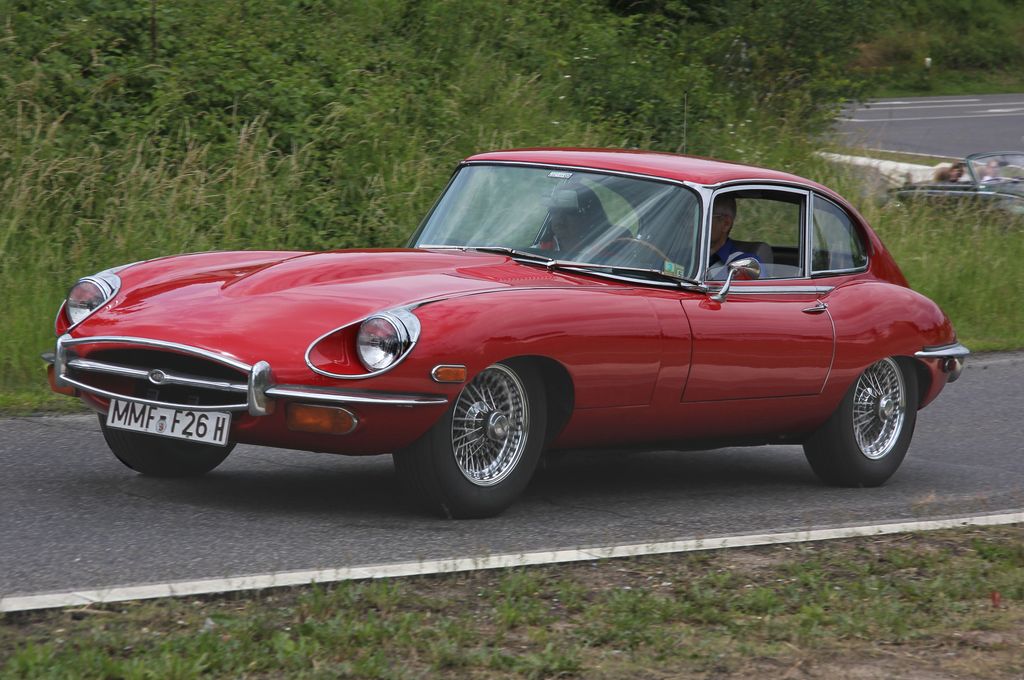
2. **Jaguar E-Type**Prepare to be utterly mesmerized by the Jaguar E-Type, a car that, upon its introduction in 1961, immediately cemented its place as a global symbol of unparalleled elegance and electrifying speed. There’s a reason why so many, from the most seasoned automotive critics to casual admirers, consider its long, flowing lines and sleek proportions to be the very definition of automotive beauty. It truly stands as one of the most beautiful cars ever built.
Beyond its undeniably stunning exterior lies a heart of pure British engineering: a 3.8-liter inline-six engine, robustly capable of delivering a thrilling 265 horsepower. This was a car built not just for looks, but for the open road, promising exhilarating drives. Its advanced suspension, featuring independent front and rear systems, ensured a ride that was both remarkably smooth and incredibly responsive, making every journey a joyous occasion.
Step inside the E-Type, and you’re greeted by an interior that, while simple, exudes a refined charm. Leather upholstery and a dashboard meticulously focused on the driver create an inviting, purposeful space. This exquisite combination of breathtaking performance and captivating aesthetics quickly made the E-Type a beloved favorite among enthusiasts and collectors alike, and it remains a supreme model that set the standard for all Jaguar sports cars to follow, often envisioned as an open-top car with a long body and capacity for two, blending bold colors with a polished, calm demeanor.
Car Model Information: 1971 Jaguar E-Type Restomod
Sp: uk
Name: Jaguar E-Type
Caption: 1961 E-Type Series 1 3.8-Litre, the first production model of this open two-seater
Aka: Jaguar XK-E , Jaguar V-12
Manufacturer: Jaguar Cars
Production: 1961–1974
Class: Sports car
Predecessor: Jaguar XK150
Related: Jaguar D-Type,Jaguar XJ13
Successor: Jaguar XJS
Layout: FMR layout
Assembly: Coventry,England
Designer: Malcolm Sayer
Categories: 1970s cars, 2+2 coupés, All articles with dead external links, All articles with specifically marked weasel-worded phrases, All articles with unsourced statements
Summary: The Jaguar E-Type, or the Jaguar XK-E for the North American market, is a British front mid-engined sports car that was manufactured by Jaguar Cars Ltd from 1961 to 1974. Its sleek appearance, advanced technologies, high performance, and competitive pricing established it as an icon. The E-Type’s claimed 150 miles per hour (240 km/h) top speed, sub-7-second 0 to 60 mph (97 km/h) acceleration, largely unitary body construction, front and rear independent suspension with disc brakes, mounted inboard at the rear, and rack-and-pinion steering spurred industry-wide changes.
The E-Type was based on Jaguar’s D-Type racing car, which had won the 24 Hours of Le Mans for three consecutive years beginning in 1955.
The E-Type employed what was, for the early 1960s, a novel design principle, with a front subframe carrying the engine, front suspension and front bodywork bolted directly to the body tub. No ladder frame chassis, as was common at the time, was needed and as such the first cars weighed only 1,315 kg (2,899 lb).
It is rumored that, on its debut on 15 March 1961, Enzo Ferrari called it “the most beautiful car ever made”, but this statement is not fully confirmed. In 2004, Sports Car International magazine placed the E-Type at number one on their list of Top Sports Cars of the 1960s. In March 2008, the Jaguar E-Type ranked first in The Daily Telegraph’s online list of the world’s “100 most beautiful cars” of all time.
Get more information about: Jaguar E-Type
Buying a high-performing used car >>>
Brand: Jaguar Model: E-Type
Price: $64,900 Mileage: 2,455 mi.
Read more about: Future Fortunes on Four Wheels: 14 Classic Cars You Need to Buy Now Before Their Value Explodes
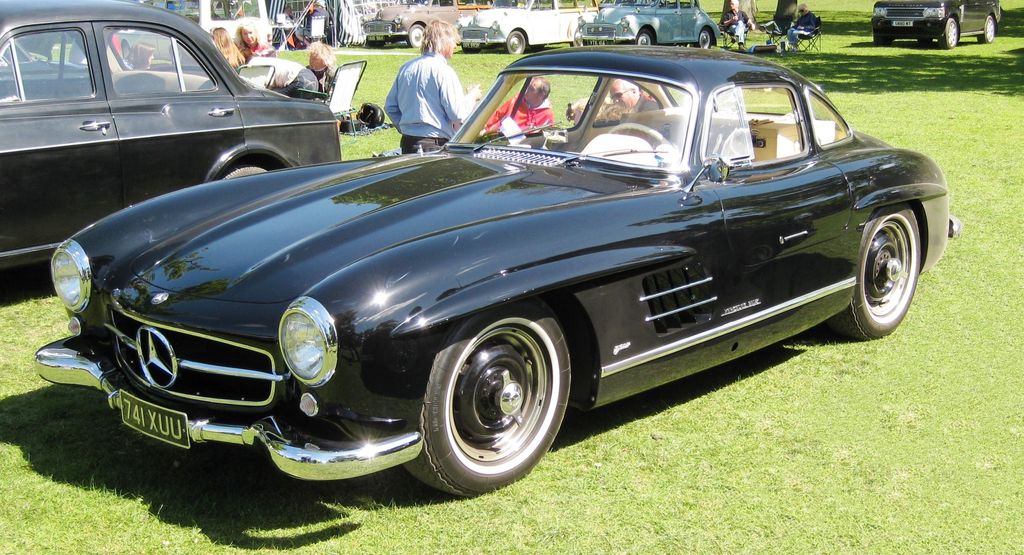
3. **Mercedes-Benz 300SL Gullwing**The Mercedes-Benz 300SL Gullwing, unleashed upon the world in 1954, is not merely a car; it is an epoch-defining statement, as iconic for its revolutionary design as it is for its blistering performance. Its signature gullwing doors, those magnificent upward-swinging portals, coupled with its impossibly low-slung body, conspire to create a silhouette that is not just striking, but utterly unforgettable. It’s a design that screams innovation and pure, unadulterated cool.
Beneath that mesmerizing exterior beat the heart of a true titan: a 3.0-liter inline-six engine that propelled the 300SL to the forefront of automotive speed. It was, without a doubt, one of the fastest production cars of its time, effortlessly reaching top speeds in excess of 160 mph (260 km/h). This wasn’t just about raw power; it was about the harmonious marriage of speed and sophisticated engineering.
The car’s suspension system, state-of-the-art for its era with a fully independent front and rear setup, ensured a driving experience that was both thrilling and remarkably controlled. Inside, the 300SL was a testament to Mercedes-Benz’s unwavering commitment to luxury and impeccable craftsmanship, featuring sumptuously appointed leather seats and gleaming polished wood trim. The 300SL was a pioneer, the fastest production car of its time, initially offered as a two-seater coupé, and of those, only 1,400 were coupes. Its elegance and power made it the ultimate collector’s item, defining the SL-Class grand tourer for generations.
Read more about: Unveiling Automotive Royalty: The 15 Most Iconic Mercedes-Benz Models of All Time
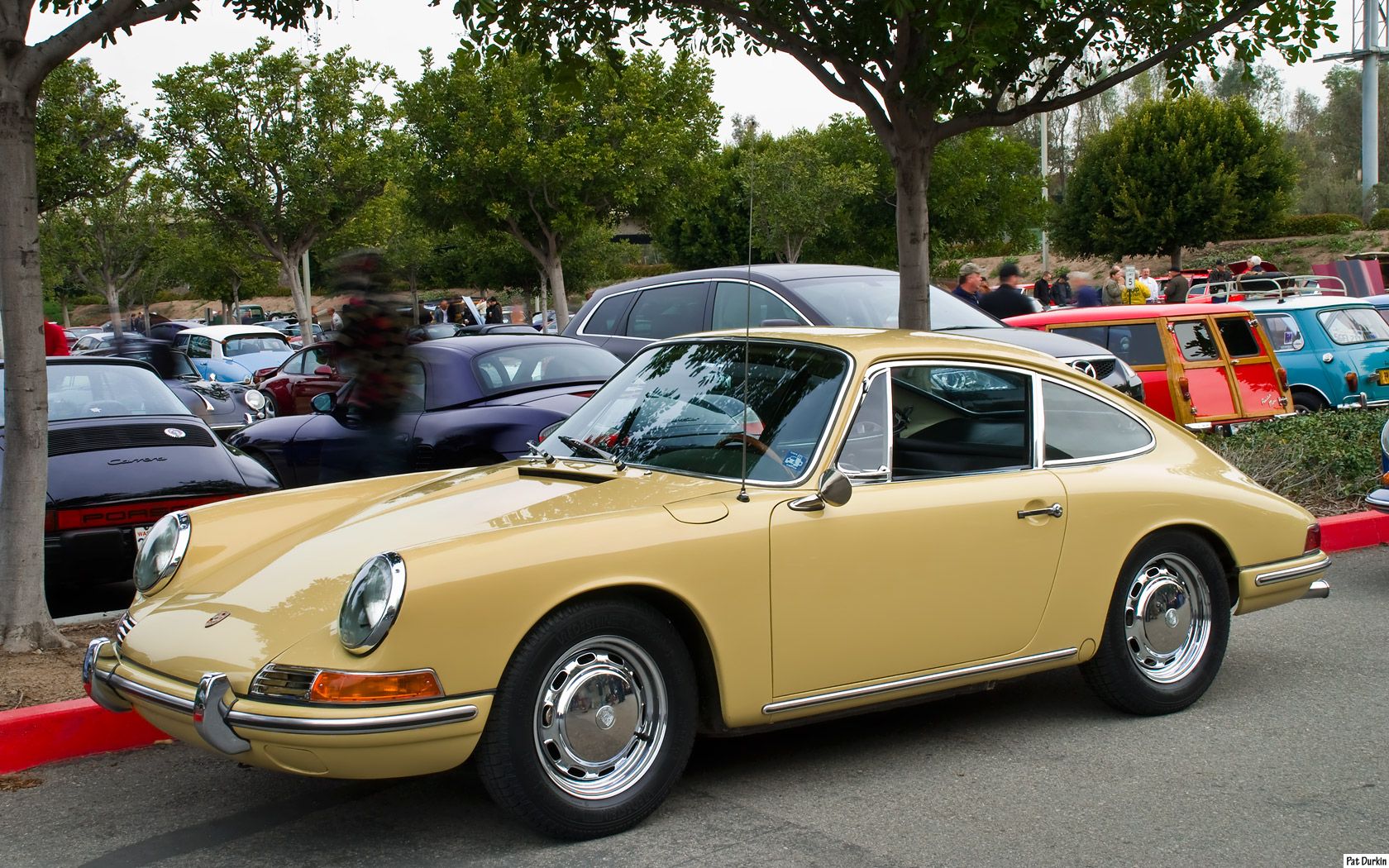
4. **Porsche 911 (1964)**The Porsche 911, first gracing the world stage in 1964, is far more than just a car; it is the very embodiment of a brand’s legacy, the enduring definition of Porsche itself. With its instantly recognizable round headlights, distinctive rear-engine layout, and a timeless silhouette that has barely aged a day, the 911 has become utterly synonymous with high-performance sports cars, a benchmark against which all others are measured. It’s a design icon, a marvel of iterative perfection.
Powering this automotive legend was a rear-mounted 2.0-liter flat-six engine. While initially producing a respectable 130 horsepower, this was more than enough to propel the original 911 to speeds of 130 mph, establishing its credentials as a serious performer right out of the gate. But the 911’s magic truly lies in its dynamic capabilities, a testament to thoughtful engineering.
The 911’s suspension setup, featuring independent front and rear systems with a coil spring arrangement, bestowed upon it exceptional handling and an almost supernatural balance, making it a true driver’s car—one that rewards skill and passion in equal measure. Inside, the 911 strikes a remarkable balance: it is as practical as it is stylish, presenting a simple yet undeniably luxurious interior that speaks volumes about its enduring appeal and commitment to a focused, engaging driving experience. Its classic yet modern exterior, paired with an advanced, luxurious interior, secures its place as one of the most visually striking sports cars of all time.
Car Model Information: 1987 Porsche 911
Name: Porsche 911
Caption: The 1 millionth 911 produced on display at Volkswagen Group Forum, Berlin
Designer: Ferdinand Alexander Porsche
Manufacturer: Porsche
Production: September 1964 – present
Assembly: Stuttgart,Baden-Württemberg
Class: Sports car
BodyStyle: unbulleted list
Related: unbulleted list
Layout: Rear-engine design,rear-wheel drive
Predecessor: Porsche 356
Categories: 1970s cars, 1980s cars, 1990s cars, 2+2 coupés, 2000s cars
Summary: The Porsche 911 model series (pronounced Nine Eleven or in German: Neunelf) is a family of German two-door, high performance rear-engine sports cars, introduced in September 1964 by Porsche AG of Stuttgart, Germany. Now in its eighth generation, all 911s have a rear-mounted flat-six engine, and usually 2+2 seating, except for special 2-seater variants. Originally, 911s had air-cooled engines, and torsion bar suspension, but the 911 has been continuously enhanced, and evolved across generations. Though the 911 core concept has remained largely unchanged, water-cooled engines were introduced with the 996 series in 1998, and front and rear suspension have been replaced by Porsche-specific MacPherson suspension up front, and independent multi-link rear suspension.
The 911 has been raced extensively by private and factory teams, in a variety of classes. It is among the most successful competition cars. In the mid-1970s, the naturally aspirated 911 Carrera RSR won world championship races including Targa Florio and the 24 Hours of Daytona. The 911-derived 935 turbo also won the 24 Hours of Le Mans in 1979. Porsche won the World Championship for Makes in 1976, 1977, 1978, and 1979 with 911-derived models.
In a 1999 poll to determine the Car of the Century, the 911 ranked fifth — one of two in the top five that had remained continuously in production (the original Beetle remained in production until 2003). The one millionth example was manufactured in May 2017 and is in the company’s permanent collection.
Get more information about: Porsche 911
Buying a high-performing used car >>>
Brand: Porsche Model: 911
Price: $234,950 Mileage: 6,992 mi.
Read more about: Everyone Wants These 14 Classic Cars In Their Garage: A Deep Dive for Enthusiasts
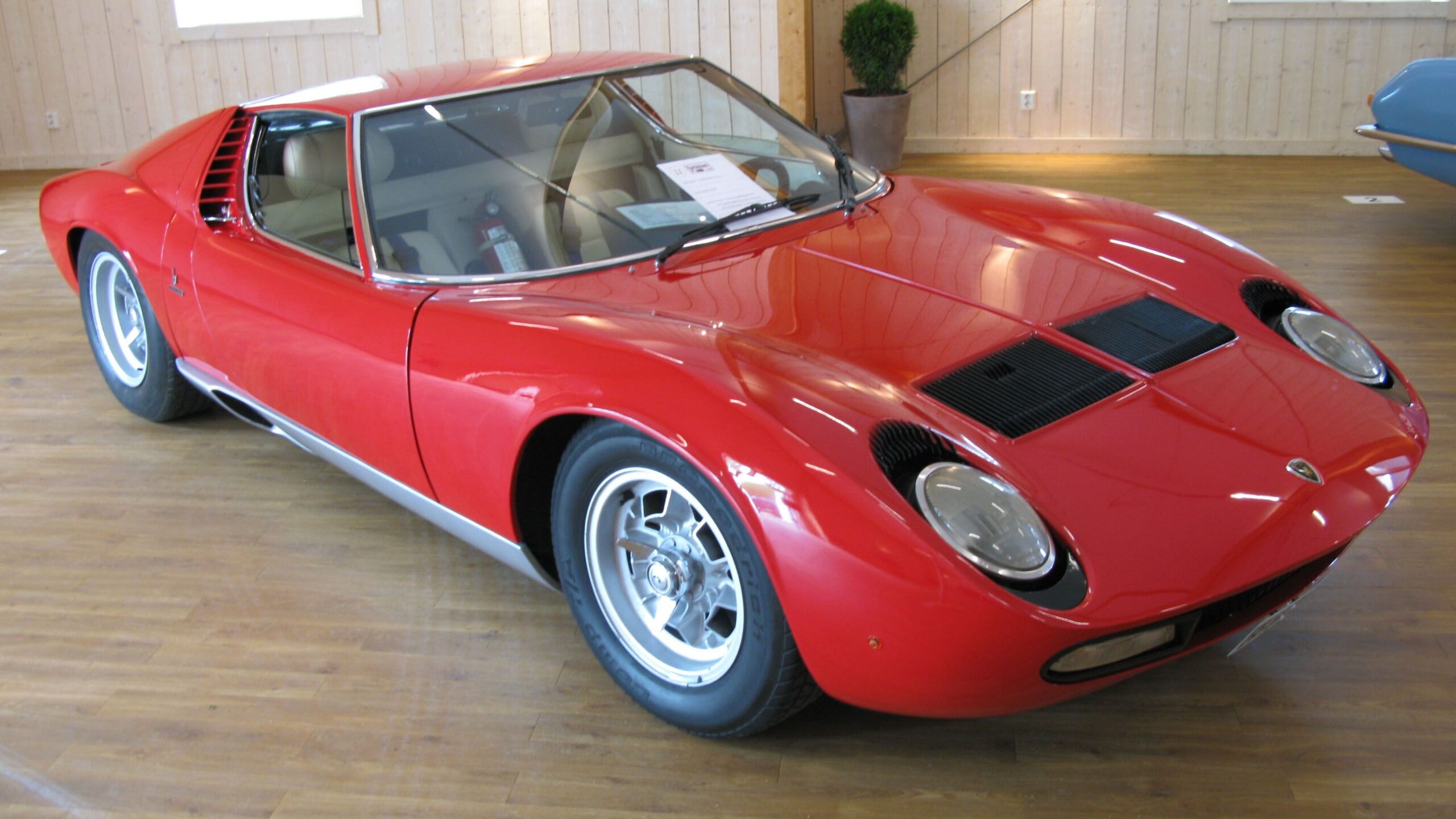
5. **Lamborghini Miura**Hold onto your hats, because the Lamborghini Miura, introduced with a bang in 1966, is often heralded as the car that didn’t just kickstart the supercar era—it utterly redefined it. This was a machine of audacious ambition, its mid-mounted V12 engine and incredibly aggressive, yet stunningly beautiful, styling were nothing short of revolutionary at the time, ripping up the rulebook and rewriting what a performance car could be. It’s a design that still commands immediate, awe-struck attention.
This was no mere static sculpture; with a top speed of 170 mph, the Miura was one of the fastest production cars of its entire era, a true velocity beast wrapped in an exquisite package. Its formidable performance was matched by its dynamic capabilities, thanks to a suspension system that ingeniously blended double wishbones in the front with an independent rear setup, delivering handling that was both remarkably sharp and undeniably exciting.
Stepping into the Miura, one was enveloped in a luxurious leather interior, with dashboard controls that were a testament to Lamborghini’s unwavering dedication to both blistering performance and sumptuous comfort. Today, the Miura isn’t just revered; it’s practically worshipped as one of the most beautiful and profoundly collectible cars in all of history. Lando Norris, a Formula 1 driver with exquisite taste, even admits it’s “one of the most beautiful cars ever made,” a 1960s masterpiece that still captures the imagination.
Read more about: Do You Remember These 14 Jaw-Dropping Cars from the Golden Age of the 1960s?
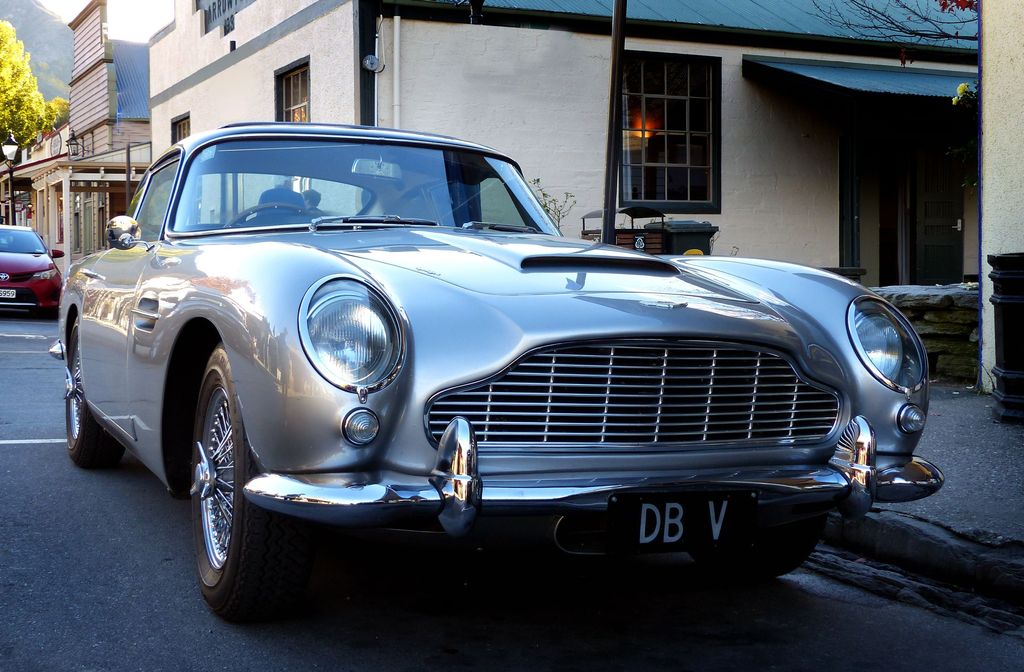
6. **Aston Martin DB5**The Aston Martin DB5, oh what a car! Released in 1963, this British icon is perhaps most famously known as the sophisticated, gadget-laden steed of James Bond himself in *Goldfinger*, but its legacy extends far beyond cinematic fame. Its masterful combination of sleek, purposeful lines and an air of understated, yet undeniable, luxury instantly propelled it into the realm of classics, a car that exuded class and power in equal measure.
Underneath its impeccably tailored exterior resided a formidable 4.0-liter inline-six engine, which commanded an impressive 282 horsepower. This potent powerplant enabled the DB5 to achieve speeds of 145 mph, solidifying its credentials as a genuinely high-performance grand tourer. But the DB5 was not just about raw speed; it was about the journey, and the comfort with which it was undertaken.
The car’s independent front and rear suspension, coupled with its carefully tuned coil springs, worked in perfect harmony to ensure a ride that was both beautifully smooth and perfectly controlled, making long journeys a true pleasure. Inside, the DB5 was a sanctuary of refined elegance: a plush leather interior, a meticulously crafted walnut dashboard, and a host of luxurious details made it as comfortable and inviting as it was thrillingly fast. Its timeless beauty continues to captivate collectors and enthusiasts across generations, proving that true style never fades. The fact that it was a prized possession of two of the most renowned Englishmen of the 20th century (albeit one fictional) was all the proof the world needed that the DB5 was “the” car of the moment.
As our journey through automotive excellence continues, we pivot from the celebrated icons of the golden era to witness the magnificent evolution of automotive artistry. This second chapter, ‘Evolving Elegance: From Pre-War Rarity to Modern Hypercar Brilliance,’ showcases a diverse collection of machines that have not only pushed the boundaries of design and engineering but have also continued the timeless pursuit of automotive perfection. From ultra-exclusive pre-war marvels that whisper tales of bygone glamour to audacious modern supercars and hypercars that scream the future, prepare to be captivated by the sheer ingenuity and breathtaking beauty of these extraordinary vehicles.
Car Model Information: 2022 Hyundai SANTA FE SEL 2.4
Name: Aston Martin DB5
Manufacturer: Aston Martin
Production: 1963–1965 (1,059 units),2020 (25 units)
Assembly: Newport Pagnell
Designer: Carrozzeria Touring Superleggera
Class: Grand tourer
BodyStyle: coupé
Layout: Front-engine, rear-wheel-drive layout
Engine: DOHC,Straight-6,3995 cc
Order: flip
Abbr: on
Powerout: convert
Transmission: ZF Friedrichshafen
Length: 4570 mm
Width: 1680 mm
Wheelbase: 98.0 in
Predecessor: Aston Martin DB4
Successor: Aston Martin DB6
Doors: 2
Weight: 3311 lb
Sp: uk
Categories: Articles with short description, Aston Martin vehicles, CS1: unfit URL, Cars discontinued in 1965, Cars introduced in 1963
Summary: The Aston Martin DB5 is a British grand tourer (GT) produced by Aston Martin and designed by Italian coachbuilder Carrozzeria Touring Superleggera. Originally produced from 1963 to 1965, the DB5 was an evolution of the final series of DB4. The “DB” designation is from the initials of David Brown who built up the company from 1947 onwards.
The DB5 is best-known for its role in the James Bond films. It was first driven by the fictional spy in the film Goldfinger (1964). In 2013, the car featured on a “British Auto Legends” postage stamp issued by the Royal Mail.
Get more information about: Aston Martin DB5
Buying a high-performing used car >>>
Brand: Aston Martin Model: DB5
Price: $24,900 Mileage: 28,615 mi.
Read more about: Uncovering the Apex of Automotive Rarity: 14 Limited-Production Muscle Cars You’ll Likely Only Dream Of
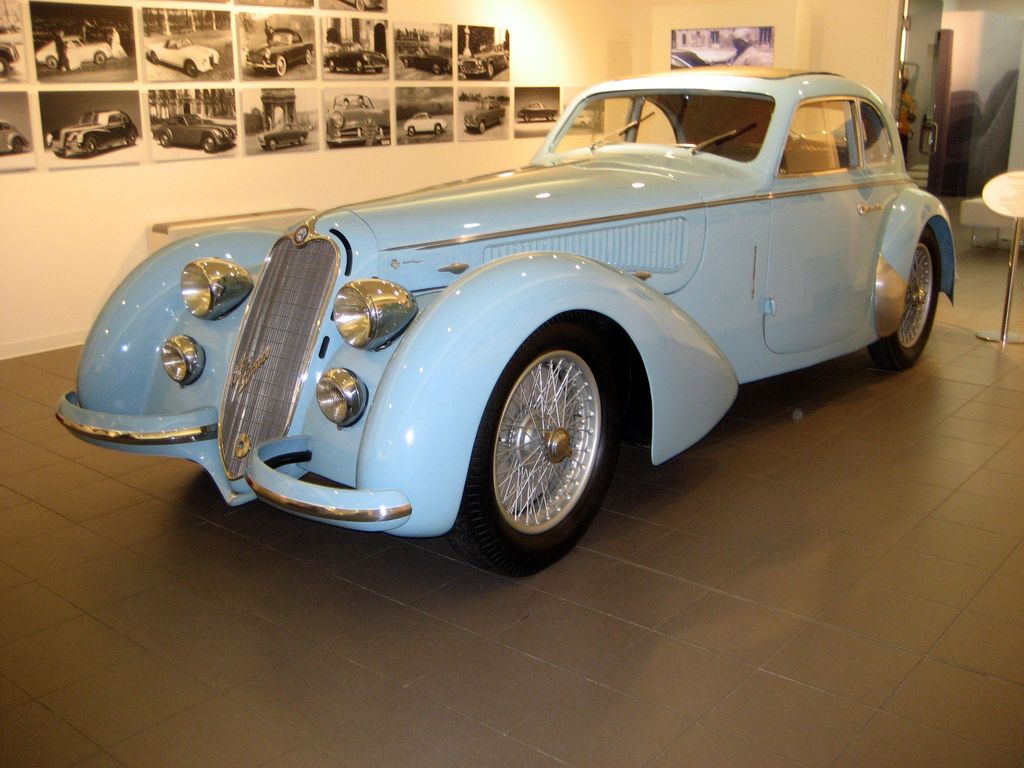
7. **Alfa Romeo 8C 2900B**Now, let’s step back in time to an era of unparalleled elegance and exclusivity with the Alfa Romeo 8C 2900B, a machine so rare and exquisite it practically defines the term ‘automotive art’. Produced in the late 1930s, this wasn’t merely a car; it was a grand statement, a harmonious blend of cutting-edge engineering and a design so breathtaking it could stop traffic even today. Its flowing lines and purposeful stance hinted at a glorious performance pedigree, cementing its status as one of the most stunning cars ever produced.
Beneath that sculpted bonnet lay a heart of pure, pre-war racing spirit: a 2.9-liter supercharged engine. This formidable powerplant delivered an impressive 180 horsepower, propelling the 8C 2900B to speeds exceeding 120 mph – a truly remarkable feat for its time. The sophistication extended to its ride, with a suspension system featuring independent front suspension and a live rear axle, providing a balanced and surprisingly comfortable journey, pushing the boundaries of what was expected from a luxury sports car.
Inside, the 8C 2900B was nothing short of a masterpiece, a sanctuary of fine leather upholstery and a gleaming, polished metal dashboard that exuded an air of bespoke craftsmanship. Every detail spoke of an uncompromising commitment to luxury and performance. With only a handful ever crafted, this Alfa Romeo remains an exceptionally rare beauty, a highly sought-after collector’s dream that reminds us of the profound elegance that graced the roads before the war.
Car Model Information: 2022 Hyundai SANTA FE SEL 2.4
Caption: Custom Alfa Romeo 8C (1936)
Name: Alfa Romeo 8C
Manufacturer: Alfa Romeo
Production: 1931–1939
Assembly: Portello (district of Milan)
Class: Luxury car,Sports car,Racing car
Layout: FR layout
Engine: Straight-8
Designer: Vittorio Jano
Categories: 24 Hours of Le Mans race cars, Alfa Romeo sports racing cars, Alfa Romeo vehicles, Articles with short description, Cars introduced in 1931
Summary: The Alfa Romeo 8C was a range of Alfa Romeo road, race and sports cars of the 1930s.
The 8C designates 8 cylinders, and originally a straight 8-cylinder engine. The Vittorio Jano designed 8C was Alfa Romeo’s primary racing engine from its introduction in 1931 to its retirement in 1939. In addition to the two-seater sports cars it was used in the world’s first genuine single-seat Grand Prix racing car, the Monoposto ‘Tipo B’ – P3 from 1932 onwards. In its later development it powered such vehicles as the twin-engined 1935 6.3-litre Bimotore, the 1935 3.8-litre Monoposto 8C 35 Type C, and the Alfa Romeo 8C 2900B Mille Miglia Roadster. It also powered top-of-the-range coach-built production models, including a Touring Spider and Touring Berlinetta.
In 2004 Alfa Romeo revived the 8C name for a V8-engined concept car. This eventually made it into production in 2007, as the 8C Competizione.
Get more information about: Alfa Romeo 8C
Buying a high-performing used car >>>
Brand: Alfa Romeo Model: 8C 2900B
Price: $24,900 Mileage: 28,615 mi.
Read more about: Unveiling Automotive Legends: The 15 Most Expensive and Rarest Cars in the World (2025 Edition)
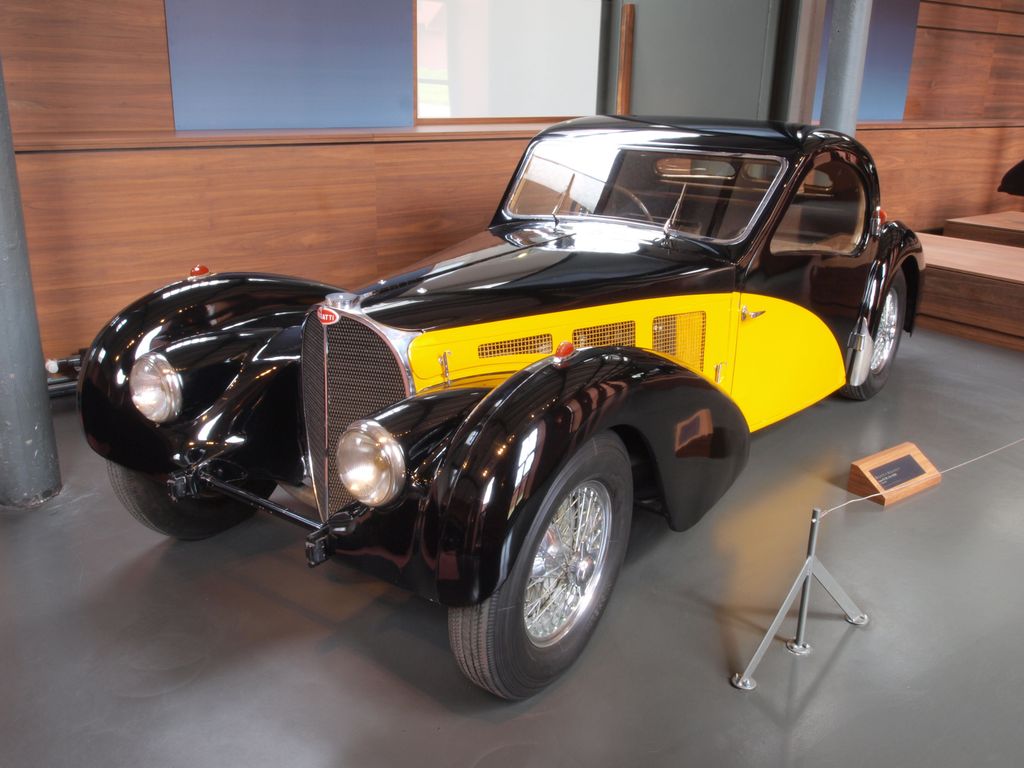
8. **Bugatti Type 57SC Atalante**Prepare to be utterly enchanted by another pre-war marvel, the Bugatti Type 57SC Atalante, a car that simply oozes sophistication and timeless allure. Crafted between 1936 and 1938, this vehicle is not just elegantly designed; it’s a testament to the artistry of a bygone era, a sleek, unforgettable silhouette that remains etched in the memory long after you’ve seen it. Its graceful curves and powerful presence make it one of the most iconic and visually striking automobiles in history.
Under the bonnet, a magnificent 3.3-liter straight-eight engine pulsed with refined power, unleashing 200 horsepower and allowing the Atalante to glide to a top speed of 120 mph. This wasn’t merely about raw speed; it was about effortless, dignified motion. The suspension system, featuring a front independent setup and a live rear axle, ensured a ride that was both smooth and stable, a testament to Bugatti’s pioneering engineering for its era, designed for grand touring in ultimate style.
Stepping inside the Type 57SC Atalante was an experience in pure, unadulterated luxury. Fine leather upholstery embraced occupants, complemented by meticulously polished wood trim, all presented in a design that was both luxurious and wonderfully minimalist. This car’s stunning styling, combined with its profound rarity, has cemented its place as one of the most coveted and celebrated cars in automotive history, a true benchmark for elegance and performance from the golden age of motoring.
Car Model Information: 2022 Hyundai SANTA FE SEL 2.4
Name: Bugatti Type 57
Caption: 1936 Bugatti Type 57 Atalante
Manufacturer: Bugatti
Assembly: Molsheim
Production: 1934–1940,710 produced
Designer: Jean Bugatti
Class: Grand tourer
Engine: DOHC,Straight-8
Predecessor: Bugatti Type 49
Successor: Bugatti Type 101
Categories: 24 Hours of Le Mans race cars, Articles with short description, Bugatti automobiles, CS1 Romanian-language sources (ro), Cars introduced in 1934
Summary: The Bugatti Type 57 and later variants (including the famous Atlantic and Atalante) was a grand tourer built from 1934 through 1940. It was an entirely new design created by Jean Bugatti, son of founder Ettore. A total of 710 Type 57s were produced.
Type 57s used a straight-8 twin-cam engine of 3.3 L (3257 cc/198 in³) displacement. Bore and stroke were 72 mm by 100 mm based on that of the Type 49 but heavily modified by Jean Bugatti, unlike the single cam engines of the Type 49 and earlier models. The engines of the Type 50, 51 used bevel gears at the front of the engine to transmit power from the crankshaft, whereas the Type 57 used a train of spur gears at the rear of the engine, with fiber gear wheels on the camshafts to achieve more silence in operation.
There were two basic variants of the Type 57 car:
The original Type 57
The lowered Type 57S/SC
The Type 57 chassis and engine was revived in 1951 as the Bugatti Type 101. A rediscovered Type 57 was sold for 3.4 million euros at auction on 7 February 2009 at a motor show in Paris.
Get more information about: Bugatti Type 57
Buying a high-performing used car >>>
Brand: Bugatti Model: Type 57SC Atalante
Price: $24,900 Mileage: 28,615 mi.
Read more about: Sculpted for the Ages: MotorTrend’s Definitive Look at the Most Visually Arresting Cars from Every Iconic Marque
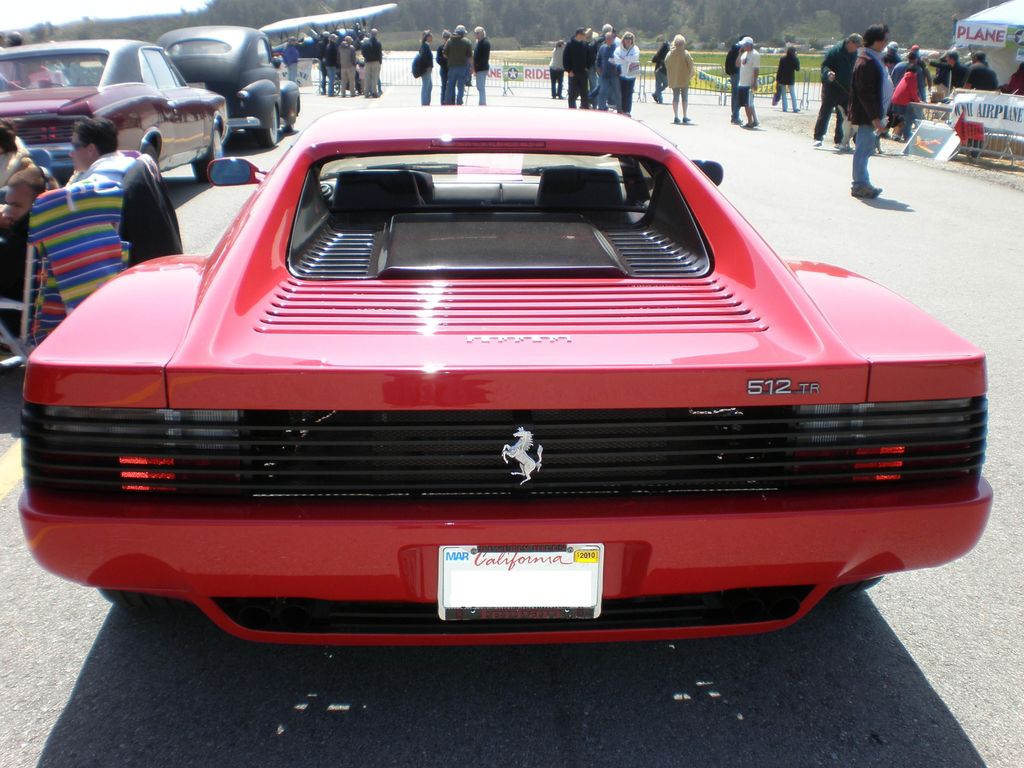
9. **Ferrari 512 TR**Now, let’s fast forward to the early 1990s, where Ferrari once again redefined automotive allure with the spectacular 512 TR. This isn’t just a sports car; it’s an undeniable declaration of power and aesthetic supremacy, evolving the iconic Testarossa into something even more refined and utterly compelling. Its wider track, lower stance, and more integrated styling cues gave it an aggressive yet incredibly elegant presence, making it one of the most visually striking and powerful machines to ever wear the Prancing Horse badge.
At the heart of this Italian beast throbbed a glorious 4.9-liter V12 engine, meticulously tuned to unleash an astonishing 428 horsepower. This allowed the 512 TR to rocket to an exhilarating top speed of 195 mph, firmly placing it among the fastest and most desirable cars of its generation. Its advanced suspension, boasting an independent rear setup and double wishbones in the front, ensured handling that was not just exceptional, but provided a visceral, connected feel with the asphalt, rewarding every input with precision and excitement.
The interior of the 512 TR was a testament to Ferrari’s unwavering dedication to both blistering performance and luxurious comfort. Sumptuous leather seating welcomed you, while a functional yet stylish dashboard presented all the high-end details and craftsmanship you’d expect from Maranello’s finest. Today, the Ferrari 512 TR remains an intensely sought-after collector’s item, cherished not just for its breathtaking speed, but for its perfect blend of timeless aesthetics and raw, untamed power.
Car Model Information: 2022 Hyundai SANTA FE SEL 2.4
Name: Ferrari Testarossa, 512 TR and F512 M
Manufacturer: Ferrari
Production: 1984–1996,9,939 produced
Assembly: Maranello
Predecessor: Ferrari Berlinetta Boxer
Class: Sports car,Grand tourer
BodyStyle: berlinetta
Layout: Rear mid-engine, rear-wheel-drive layout
Engine: Ferrari flat-12 engine,Flat-12 engine
Transmission: Manual transmission
Designer: Leonardo Fioravanti (engineer)
Categories: 1990s cars, All articles with dead external links, All articles with unsourced statements, Articles containing Latin-language text, Articles with dead external links from February 2018
Summary: The Ferrari Testarossa (Type F110) is a 12-cylinder mid-engine sports car manufactured by Ferrari, which went into production in 1984 as the successor to the Ferrari Berlinetta Boxer. The Pininfarina-designed car was originally produced from 1984 until 1991, with two model revisions following the end of Testarossa production called the 512 TR and F512 M, which were produced from 1992 until 1996. Including revised variations, almost 10,000 cars in total were produced, making it at the time one of the most mass-produced Ferrari models.
The Testarossa is a two-door coupé that premiered at the 1984 Paris Auto Show. All versions of the Testarossa were available with a rear-mounted, five-speed manual transmission. The rear mid-engine design (engine between the axles but behind the cabin) keeps the centre of gravity in the middle of the car, which increases stability and improves the car’s cornering ability, and thus results in a standing weight distribution of 40% front: 60% rear.
The original Testarossa was re-engineered for the 1992 model year and was introduced as the 512 TR (TR meaning TestaRossa), at the Los Angeles Auto Show, effectively as a completely new car, and an improved weight distribution of 41% front, 59% rear. Another new variant called the F512 M was introduced at the 1994 Paris Auto Show. The car dropped the TR initials and added the M which in Italian stood for modificata, or translated to modified, and was the final version of the Testarossa, which continued its predecessor’s weight distribution improvement of 42% front, 58% rear. The F512 M was Ferrari’s last vehicle that featured the flat-12 engine.
The Testarossa is a recognized cultural icon of the 1980s, and was popularized by media including the 1984 television series Miami Vice (from the 1986 season onward) and Sega’s 1986 video game Out Run.
Get more information about: Ferrari Testarossa
Buying a high-performing used car >>>
Brand: Ferrari Model: 512 TR
Price: $24,900 Mileage: 28,615 mi.
Read more about: 15 American Cars That Command Shockingly High Prices Today: A Deep Dive into Automotive Excellence
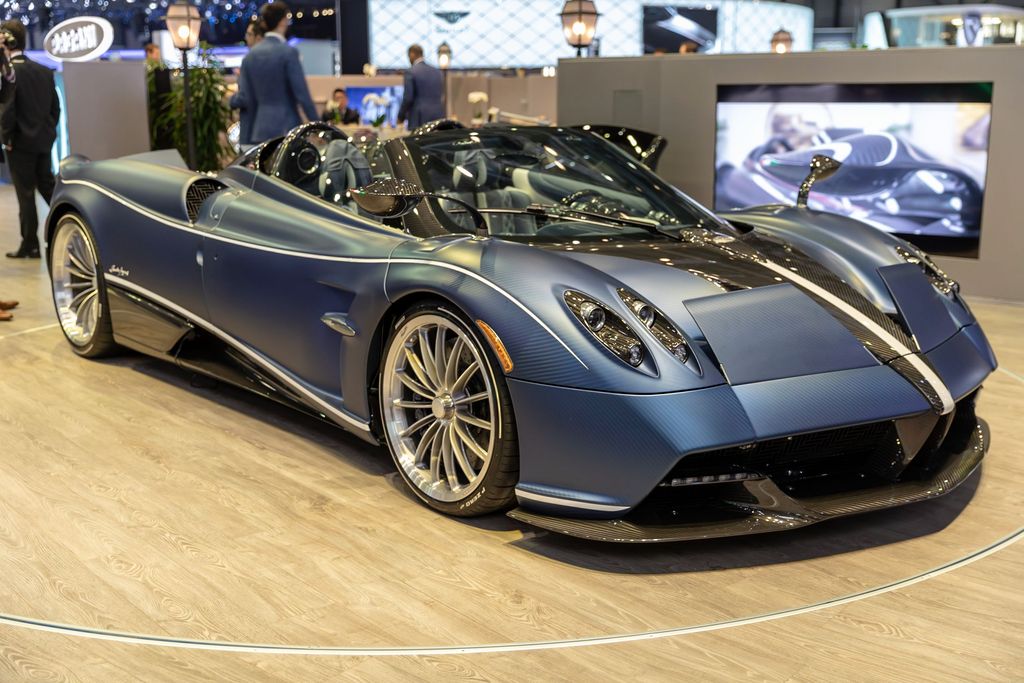
10. **Pagani Huayra**Prepare to have your perception of automotive design radically redefined, because the Pagani Huayra explodes onto the scene as one of the most visually striking and utterly captivating supercars of the 21st century. This isn’t just a car; it’s a meticulously crafted sculpture of speed, a symphony of aggressive stance and flowing, almost organic curves that relentlessly push the boundaries of what is aesthetically and aerodynamically possible in automotive styling. From its active aerodynamics to its intricate details, every element of the Huayra is a marvel.
Powering this incredible machine is a thunderous 6.0-liter twin-turbo V12 engine, a masterpiece of engineering producing an awe-inspiring 720 horsepower. This immense power catapults the Huayra to a staggering top speed of 230 mph, delivering a driving experience that is as visceral as it is exhilarating. Its advanced suspension system, featuring double wishbones with coilovers, ensures handling of almost surgical precision, providing unwavering control and feedback even as speeds reach the most extreme levels.
Step inside, and the Huayra instantly immerses you in a world where luxury and performance blend seamlessly. The cabin is a breathtaking display of carbon fiber, exquisite leather, and intricate, jewel-like details, creating an environment that is both driver-focused and supremely opulent. The Pagani Huayra stands as a modern masterpiece, a testament to Horacio Pagani’s relentless pursuit of perfection, and a car that continues to inspire profound awe and admiration among car enthusiasts worldwide, a true modern icon.
Car Model Information: 2014 Pagani Huayra Coupe
Name: Pagani Huayra
Caption: Pagani Huayra Roadster
Manufacturer: Pagani Automobili
Production: 2011–2018
(Huayra; 100 units),2017–2019
(Huayra BC; 29 units),2017–2020
(Huayra Roadster; 100 units),2019–2022
(Huayra Roadster BC; 40 units),2019–2021
(Imola; 5 units),2020–2022
(Huayra Tricolore; 3 units),2021–present
(Huayra R; 30 units),2022
(Huayra Codalunga; 5 units),2023–present
(Imola Roadster; 8 units),2025–
(Huayra R Evo),(number of units does not include prototypes)
Assembly: San Cesario sul Panaro
Designer: Horacio Pagani (auto executive)
Class: Sports car
BodyStyle: coupe
Related: Pagani Zonda R
Layout: Rear mid-engine, rear-wheel-drive layout
Engine: ubl
Abbr: on
Powerout: {{convert,740,PS,kW hp,abbr=on,0
Transmission: Xtrac Limited,Xtrac Limited,Sequential manual transmission
Wheelbase: Convert
Length: Convert
Width: Convert
Height: Convert
Weight: {{Convert,1350,kg,0,abbr=on
Predecessor: Pagani Zonda
Successor: Pagani Utopia
Doors: Gull-wing doors
Categories: All articles needing additional references, All articles with unsourced statements, Articles needing additional references from February 2023, Articles with short description, Articles with unsourced statements from February 2023
Summary: The Pagani Huayra (Italian pronunciation: [ˈwaira]) is a mid-engine sports car produced by Italian sports car manufacturer Pagani, superseding the company’s previous offering, the Zonda. It is named after Wayra Tata, the Quechua (indigenous South American) wind god. The Huayra was named “The Hypercar of the Year 2012” by Top Gear magazine. On 11 February 2015 it was reported that the Pagani Huayra had been sold out. The Huayra was limited to just 100 units as part of Pagani’s agreement with engine supplier Mercedes-AMG.
The Pagani Huayra was officially debuted online with several pictures in a press release on 25 January 2011. The official world debut was at the headquarters of Pirelli in Milan in February 2011.
Get more information about: Pagani Huayra
Buying a high-performing used car >>>
Brand: Pagani Model: Huayra
Price: Not Priced Mileage: 9,873 mi.
Read more about: 15 American Cars That Command Shockingly High Prices Today: A Deep Dive into Automotive Excellence

11. **Ferrari LaFerrari**And now, for a machine that encapsulates Ferrari’s vision of the future: the limited-edition hybrid supercar, LaFerrari. Unveiled with tremendous fanfare at the 2013 Geneva Auto Show, LaFerrari is more than just a name; it literally means “The Ferrari,” a testament to its status as the definitive expression of the brand’s technological and design prowess at the time. Its aggressive, purposeful lines, sculpted for both aesthetics and extreme aerodynamic efficiency, showcase a blend of raw power and undeniable Italian flair.
Designed by Centro Stile Ferrari under the visionary leadership of Flavio Manzoni, LaFerrari is a tour de force of engineering. It harnessed a revolutionary mild hybrid system, coupling a traditional V12 engine with an electric motor to unleash an astonishing combined output of 789 horsepower. This incredible powertrain propels LaFerrari to mind-bending speeds, easily reaching up to 217 mph (349 km/h), making it not only the most powerful Ferrari ever produced at its launch but also a pioneer in sustainable performance, remarkably reducing fuel consumption by 40 percent.
LaFerrari represents a pivotal moment in automotive history, a perfect fusion of blistering track performance and cutting-edge environmental responsibility. Its exquisite, driver-focused interior, brimming with carbon fiber and state-of-the-art technology, reinforces its status as a machine built for ultimate engagement. As a limited-production, hybrid hypercar, it symbolizes Ferrari’s relentless pursuit of innovation, capturing the hearts of enthusiasts and collectors alike with its groundbreaking performance and undeniably iconic beauty.
Car Model Information: 2014 Ferrari LaFerrari Coupe
Name: LaFerrari
Manufacturer: Ferrari
ModelCode: F150
Production: 2013–2018
ModelYears: 2013–2016 (coupé),2016–2018 (Aperta)
Assembly: Maranello
Designer: Flavio Manzoni
Class: Sports car
BodyStyle: coupé
Layout: Rear mid-engine, rear-wheel-drive layout
Related: Ferrari FXX-K,Ferrari Daytona SP3
Engine: Ferrari F140 engine,V12 engine
Motor: Kinetic energy recovery system
Transmission: Dual-clutch transmission
Powerout: Convert
Wheelbase: 2650 mm
Abbr: on
Length: 4702 mm
Width: 1992 mm
Height: 1116 mm
Weight: 3495 lb
Order: flip
Predecessor: Ferrari Enzo
Successor: Ferrari F80
Sp: uk
Doors: Butterfly doors
Categories: Articles with short description, CS1 Italian-language sources (it), Cars discontinued in 2018, Cars introduced in 2013, Commons category link from Wikidata
Summary: The LaFerrari (project name F150) is a limited production mid-engine, mild hybrid sports car built by Italian automotive manufacturer Ferrari. Its name means “The Ferrari” in Italian, as it is intended to be the definitive Ferrari.
Get more information about: LaFerrari
Buying a high-performing used car >>>
Brand: Ferrari Model: LaFerrari
Price: Not Priced Mileage: 724 mi.
Read more about: The Maserati MC12: A Deep Dive into the Genesis, Engineering, and Racing Triumphs of a Rare Automotive Masterpiece

12. **Bugatti Chiron**Finally, we arrive at the absolute apex of automotive engineering and breathtaking design: the Bugatti Chiron. This isn’t just a hypercar; it is a monumental achievement, a testament to unparalleled craftsmanship and a relentless pursuit of the impossible. Its aggressive, yet exquisitely sculpted aerodynamic profile and instantly recognizable Bugatti C-line are more than just design features; they are statements of intent, declaring its status as a machine without peer. The Chiron embodies raw power wrapped in an utterly mesmerizing form.
Beneath its sleek, muscular body lies the heart of a titan: a quad-turbocharged 8.0L W16 engine, an engineering marvel that generates an earth-shattering 1500 horsepower. This colossal power enables the Chiron to achieve a staggering top speed of 261 mph, placing it firmly in an exclusive club of the fastest production cars ever built. Every single component, from its advanced cooling systems to its bespoke tires, is engineered to handle such immense forces with unflappable composure.
The interior of the Chiron is a sanctuary of bespoke luxury and meticulous attention to detail. Every material, from the finest leather to polished aluminum and carbon fiber, is hand-fitted to perfection, creating a cabin that is as opulent as it is functional. With its sleek curves, monumental power, and impeccable finish, the Bugatti Chiron stands as one of the most visually arresting and technically advanced supercars ever conceived, a true icon that pushes the very limits of what automotive beauty and performance can achieve.
Car Model Information: 2022 Bugatti Chiron Super Sport
Name: Bugatti Chiron
Manufacturer: Bugatti Automobiles
Production: 2016 – 2024
Assembly: Molsheim
Class: Sports car
BodyStyle: coupé
Related: unbulleted list
Layout: Mid-engine, four-wheel-drive layout,All-wheel drive vehicle
Engine: 8.0 L
Abbr: on
Powerout: unbulleted list
Order: flip (est) (Chiron Sport)
Transmission: dual-clutch transmission,automatic transmission
Wheelbase: 2711 mm
Length: 4544 mm
Width: 2038 mm
Height: 1212 mm
Weight: unbulleted list
Sp: uk
Predecessor: unbulleted list
Successor: unbulleted list
Designer: unbulleted list
Categories: All articles with unsourced statements, Articles with short description, Articles with unsourced statements from December 2022, Bugatti automobiles, CS1 German-language sources (de)
Summary: The Bugatti Chiron is a mid-engine two-seater sports car designed and developed in Germany by Bugatti Engineering GmbH. It was manufactured in Molsheim, France, by French automobile manufacturer Bugatti Automobiles S.A.S. The successor to the Bugatti Veyron, the Chiron was first shown at the Geneva Motor Show on 1 March 2016. The car’s design was initially previewed with the Bugatti Vision Gran Turismo concept car unveiled at the 2015 Frankfurt Auto Show.
The car is named after the Monégasque driver Louis Chiron. The car shares the name with the 1999 Bugatti 18/3 Chiron concept car.
Get more information about: Bugatti Chiron
Buying a high-performing used car >>>
Brand: Bugatti Model: Chiron
Price: Not Priced Mileage: 490 mi.
Read more about: 7 Seconds to Glory: Unveiling the Most Terrifying and Thrilling Drag Racing Machines on the Planet!
These machines, from the elegant pre-war masterpieces to the cutting-edge hypercars of today, are more than just vehicles; they are monuments to human ingenuity and passion. They represent the ceaseless quest to blend art with engineering, to create forms that ignite the soul and push the boundaries of performance and aesthetics. Each curve, every line, and all the raw power encased within these magnificent designs tell a story of innovation, beauty, and an enduring love affair between humanity and the automobile. They remind us that the pursuit of automotive perfection is a journey with no end, only ever more breathtaking horizons to explore.

